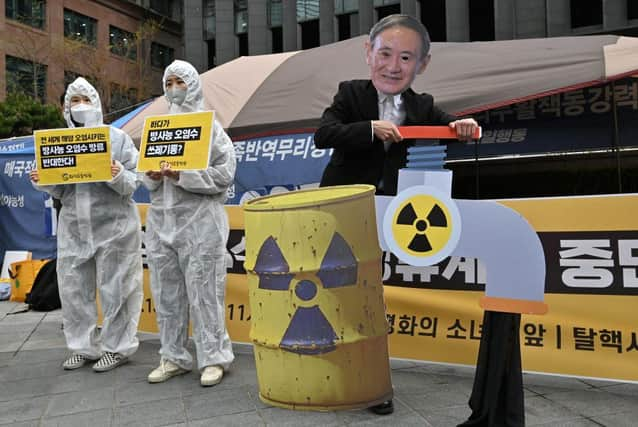Fukushima disaster: what happened at Daiichi Nuclear Power Plant and why is Japan releasing radioactive water?


More than one million tonnes of contaminated water will be released from Fukushima nuclear plant into the sea, following approval by the Japanese government.
Though the water will be diluted and treated so that radiation levels are below that of drinking water, the plans have been met with opposition by neighbouring countries, environmental groups and the local fishing industry.
What happened at Daiichi Power Plant?
Advertisement
Hide AdAdvertisement
Hide AdTen years ago, Fukushima Daiichi Power Plant was destroyed following the most powerful earthquake ever recorded in Japan: at 9.0-magnitude.
The earthquake set off a devastating tsunami which ravaged the main island of Honshu, levelling entire towns and claiming the lives of more than 18,000 people
In Fukushima, meanwhile, systems at the nuclear power plant detected the disaster and automatically shut down nuclear reactors, starting up the emergency diesel generators to keep the nuclear reactors cool.
Shortly afterwards, however, the 14-metre-high tsunami struck the plant, surging over the plant’s defences and knocking out the emergency diesel system.
In spite of workers’ efforts to restore power to the plant as quickly as possible, three of the reactors overheated, creating a nuclear meltdown as cores were partially melted.
A series of chemical explosions also damaged buildings, causing radioactive material to leak into the atmosphere and nearby water sources.
An exclusion zone was set up around the plant, with more than 150,000 people forced to evacuate.
Ever since then, authorities have used millions of tonnes of water to cool the reactors, storing the wastewater in giant tanks on site.
Why is the water being released?
Advertisement
Hide AdAdvertisement
Hide AdWith 10 years having passed since the disaster, the plant’s operator is now beginning to run out of space in which to store the wastewater from the cooling process.
Operator Tokyo Electric Power Co (TepCo) says they expect to run out of space by 2022, with around 1.3 million tonnes of water - enough to fill 500 Olympic-sized swimming pools - currently in storage.
This has created the need for authorities to free up space by releasing the water.
Currently, all waste water is filtered to remove most radioactive elements, but some do still remain. Tritium - deemed harmful to humans in large quantities - remains in the water, for instance.
Will the release cause harm to humans and animals?
Japan has insisted that their treatment process means the release is safe, with any radioactive elements greatly diluted.
The plans also have the backing of the International Atomic Energy Agency, who say the process planned is similar to how wastewater is disposed elsewhere in the world.
Both China and South Korea have objected to the plans, however, while the local fishing industry fears the release could cause people to avoid buying seafood from the area.
Radiation from tritium can be ingested, and fishing groups worry that the element could get into the food chain via fish.
Advertisement
Hide AdAdvertisement
Hide AdThere is some small risk of this happening, but most scientists believe the water will be so diluted that it will not pose a threat to human health.
Some have also pointed out that tritium has a half-life of 12 years, meaning that it should disappear from the environment in a few decades.